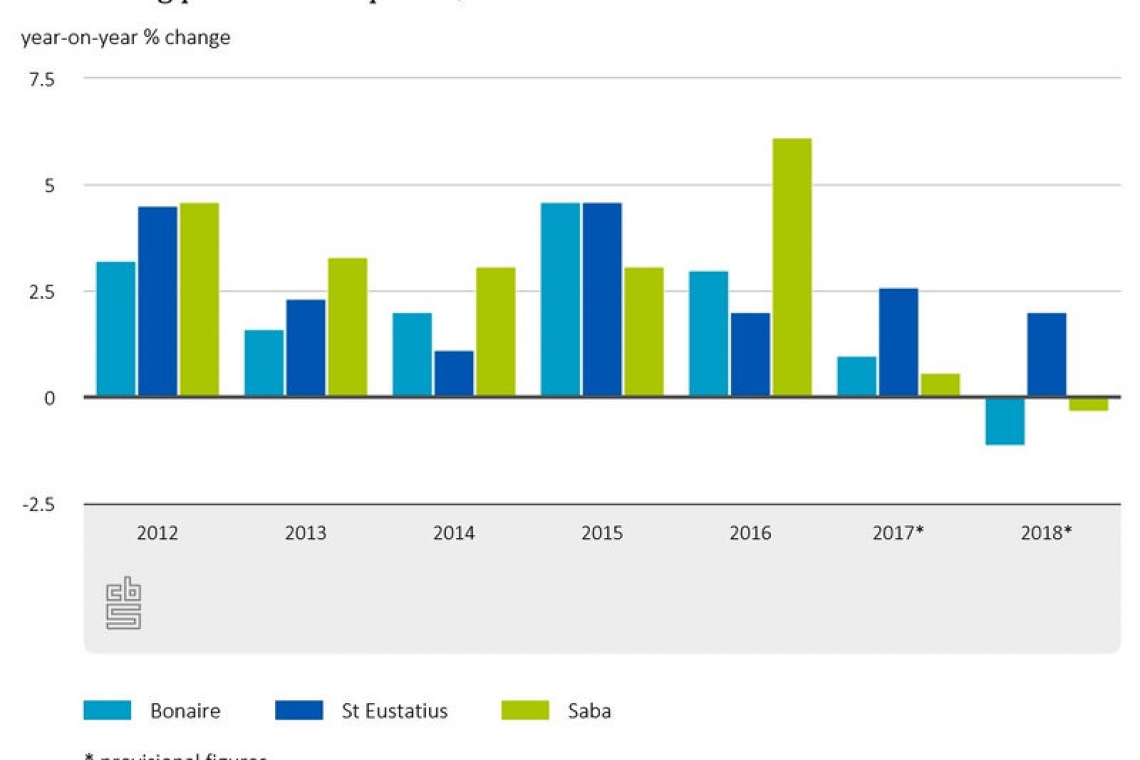CBS infographic

CBS infographic
SABA/ST. EUSTATIUS--St. Eustatius once again recorded an increase in purchasing power for consumers in 2018. The median increase was two per cent relative to 2017, the Central Bureau for Statistics (CBS) reported based on newly-released figures.
Statia’s low-income households benefited in particular due to an additional increase in statutory minimum wages and social benefits in 2018. Residents of Bonaire and Saba, by contrast, lost purchasing power compared with 2017, the CBS said.
Statians’ purchasing power has increased year after year since 2012. This means that the income of households has increased more than the average price levels and that consumers can afford to buy more goods and services.
A median increase of two per cent means that half the population has seen their spending power increase by at least two per cent. According to the CBS, 44 per cent of Statia’s population saw their spending power decrease. In Bonaire and Saba, the population lost purchasing power for the first time since 2012. The median decrease amounted to 1.1 and 0.3 per cent, respectively, for these two islands.
At 3.4 per cent, the sharpest median increase in purchasing power was recorded in Statia in the lowest income bracket.
Contrary to Statia, spending power in Bonaire declined for all income groups. The lowest-income quartile recorded the strongest decline in purchasing power at 2.6 per cent. The working population lost 0.5 per cent of their spending power, according to the CBS.
Only the two upper-income brackets in Saba saw their spending power go up. Workers in Saba benefited from a median increase of one per cent.
In Statia, the median purchasing power went up for all types of households. At 3.5 per cent, the sharpest increase was seen among single-parent families, while couples with and couples without children gained 2.6 and 2.2 per cent, respectively.
Primarily households with children benefited in Bonaire and Saba. The median purchasing power dropped by two per cent among single-person households and households of couples without children on these two islands.
The purchasing power improved across all age groups in Statia. Residents of 60 years and older saw their spending power improve by three per cent, partly due to additional increases in statutory AOV pension benefits.
Benefits were not raised in Saba and increased only slightly in Bonaire. Relatively high consumer-price inflation on these islands caused a decline in purchasing power of 2.8 and 2.6 per cent, respectively, the CBS stated.
To improve the quality of life and to combat poverty in the Caribbean Netherlands, the statutory minimum wage and social benefits, such as the AOV, the widow, widower and orphan pensions AWW, and income support “onderstand” were indexed in 2018 on the basis of CBS’ consumer price index for the third quarter of 2017.
In Saba, benefits and statutory minimum wages were not raised due to deflation amounting to 1.3 per cent. For Bonaire and Statia, benefits and statutory wages were indexed at 0.6 and 2.1 per cent, respectively.
In the same period, special adjustments were made to the minimum hourly wages and the AOV, AWW and onderstand benefits in Statia, based on figures taken from CBS’ income statistics. Benefits were raised by an additional 2.9 per cent, which resulted in a total increase of five per cent, the CBS said.







